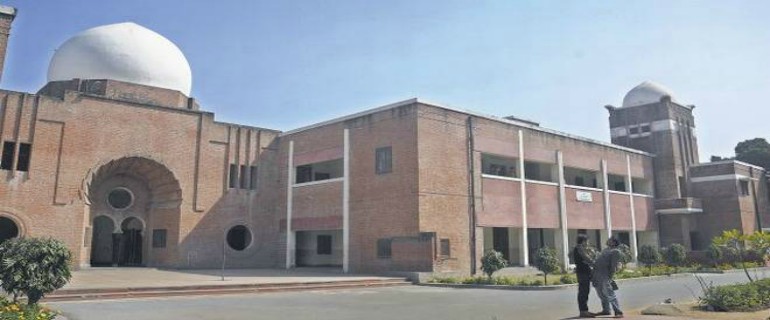Jamia Millia Islamia, an institution originally established at Aligarh in United Provinces, India in 1920 became a Central University by an act of the Indian Parliament in 1988. In Urdu language, Jamia means ‘University’, and Millia means ‘National’. The story of its growth from a small institution in the pre-independence India to a central university located in New Delhi—offering integrated education from nursery to research in specialized areas—is a saga of dedication, conviction and vision of a people who worked against all odds and saw it growing step by step. They “built up the Jamia Millia stone by stone and sacrifice by sacrifice,” said Sarojini Naidu, the nightingale of India.
Under the colonial British rule, two dominant trends joined hands and contributed towards in the birth of Jamia. One was the anti-colonial Islamic activism and the other was the pro-independence aspiration of the politically radical section of western educated Indian Muslim intelligentsia. In the political climate of 1920, the two trends gravitated together with Mahatma Gandhi as a catalyst. The anti-colonial activism signified by the Khilafat and the pro-independence aspirations symbolised by the non-cooperation movement of the Indian National Congress helped to harness creative energies and the subsequent making of Jamia Millia Islamia. Rabindranath Tagore called it “one of the most progressive educational institutions of India”.
Responding to Gandhiji’s call to boycott all educational institutions supported or run by the colonial regime, a group of nationalist teachers and students quit Aligarh Muslim University, protesting against its pro-British inclinations. The prominent members of this movement were Maulana Mehmud Hasan, Maulana Mohamed Ali, Hakim Ajmal Khan, Dr. Mukhtar Ahmad Ansari, and Abdul Majid Khwaja.
In 1962, the University Grants Commission declared the Jamia a ‘deemed to be University’. Soon thereafter, the School of Social Work was established in 1967. In 1971, Jamia started the Zakir Husain Institute of Islamic Studies, to honour Dr. Zakir Husain, who had passed away in 1969. BE course in Civil Engineering commenced in 1978; in 1981, the faculties of Humanities and Languages, Natural Sciences, Social Science, and the State Resource Centre were founded. In 1983, it started the Mass Communication Research Centre and the Centre for Coaching and Career Planning. In 1985, it established the Faculty of Engineering & Technology and the University Computer Centre. Academic Staff College and the Academy of Third World Studies followed in 1987 and 1988.
By a Special Act of the Parliament, Jamia Millia Islamia was made a central university of India in December 1988. In the list of the Faculties, i.e. Education, Humanities & Languages, Natural Sciences, Social Sciences. Engineering & Technology, one more Faculty - Faculty of Law, was added in 1989. Many new courses and programmes at UG and PG levels have since been added. Besides its Nine faculties, the Jamia has a number of centres of learning and research, like AJK-Mass Communication Research Centre (MCRC), Academy of International Studies etc. The Jamia is also marching ahead in the field of Information Technology (IT). It offers various undergraduate and postgraduate IT courses. Apart from this, the Jamia has a campus wide network which connects a large number of its departments and offices.


